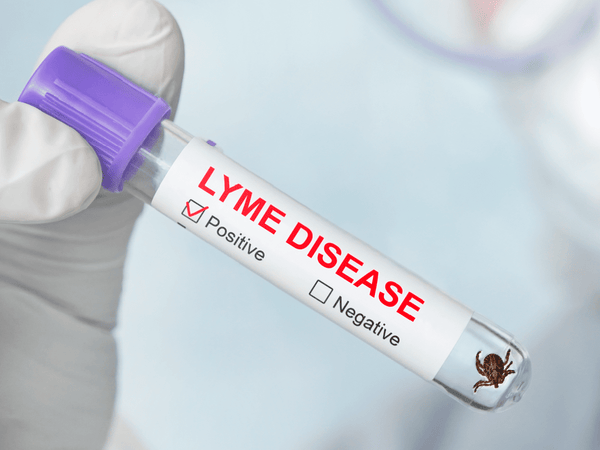Lyme Disease

Tick borne disease: Lyme disease
Also known as: Lyme borreliosis
Disease Agent: Borrelia burgdorferi, Borrelia mayonii
Infectious Bite Time: Lyme disease has been heavily researched; the consensus opinion of experts is a Lyme disease infected tick must remain attached to you and feeding for at least 36 hours before the disease is transmitted
Incubation Period: the onset of impacts from Lyme disease will begin 3 to 10 days after infection
Common Signs and Symptoms: Lyme disease is routinely described as occurring in stages, the three stages of Lyme disease are early localized, early disseminated, and late disseminated. Each phase of the condition has its own distinct set of symptoms.
Early localized symptoms are flu like, often accompanied by a signature “bullseye” rash surrounding the spot of the tick bite.

Not all people who contract Lyme disease will have a rash, and not all Lyme disease related rashes will have the proverbial “bullseye” look to them. Approximately 80 percent of individuals that contract Lyme disease will have a rash of some type at the spot of the bite. Other than said rash early localized symptoms include headache, tiredness, joint pain, fever, fatigue, chills, muscle soreness, sore throat, and swollen lymph nodes. If untreated early localized Lyme disease will progress to early disseminated Lyme, as the disease spreads to other parts of the body, causing a variety of new problems. Early disseminated Lyme disease symptoms begin weeks to months after the initial bite. Symptoms of early disseminated Lyme include additional “bullseye” rashes on parts of the body other than the bite site, spinal cord inflammation, weakness or paralysis of facial muscles on one or both sides of the face, pinkeye, heart palpitations, irregular heart-beat, severe headaches, severe muscle pain, neck stiffness, numbness in the arms or legs, swelling in pain in large joints such as elbows, knees, or shoulders, dizziness, shortness of breath, tingling or shooting pain in the hands or feet, poor memory, and fainting. If early disseminated Lyme disease symptoms are not treated or are not treated effectively, you may experience the onset of late disseminated Lyme disease, also known as late persistent Lyme disease.
This stage of Lyme is characterized by chronic symptoms including difficulty speaking, perpetual tiredness, numbness in the hands and feet, large joint arthritis, mental fogginess, and various heart problems.
Serious Complications: chronic Lyme arthritis, facial nerve paralysis, inflammation of the structures surrounding the heart, death
Treatment Options: Health care options are available, antibiotics can help. One common prescription treatment for Lyme disease is a combination of Doxycycline, Cefuroxime axetil, and Amoxicillin. Dosages will vary depending on if it is an adult or child being treated. If you believe you have contracted Lyme disease consult a medical professional, early diagnosis is essential to preventing serious complications, delaying treatment can make a bad situation worse, resulting in escalated symptom severity or even death. If you have been diagnosed with Lyme disease experts recommend a healthy low stress lifestyle, nutritious foods, and plenty of rest.
Notes and Facts: Lyme disease is a serious and sometimes deadly condition, the most prolific and well-known tick-borne disease in the world. The elderly and those with weakened immune systems may be at a higher risk for serious complications from this disease. Lyme disease is named after the town in which the condition was first recognized, Old Lyme, Connecticut. The bacterium that causes Lyme, Borrelia burgdorferi, is named after the scientist that first drew the critical connection between the infection and ticks, Willy Burgdorfer. Infectious ticks that transmit Lyme disease are most active in the late spring or early summer. Lyme disease is most common in the upper Midwestern and Northeast United States, with statistically high incidences of Lyme disease in also occurring in California, Washington, and Oregon. You cannot simply look at a tick and determine if it is infected with Lyme disease, if a tick is attached to you learn how to remove a tick and keep the tick, it can be tested for Lyme disease. Use Ticknado to prevent future attacks.
What ticks transmit Lyme disease? Eastern blacklegged tick, Western blacklegged tick, Asian longhorned tick, “deer tick”.
Primary Vector: Eastern blacklegged tick. Note most cases of Lyme disease are caused by the Eastern blacklegged tick nymphs, not the adults.
Number of infections reported per year:
United States: 25,000 to 60,000. The actual number of cases, including unreported cases, is estimated at 600,000 annually.
